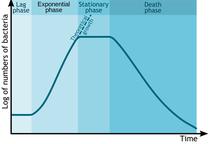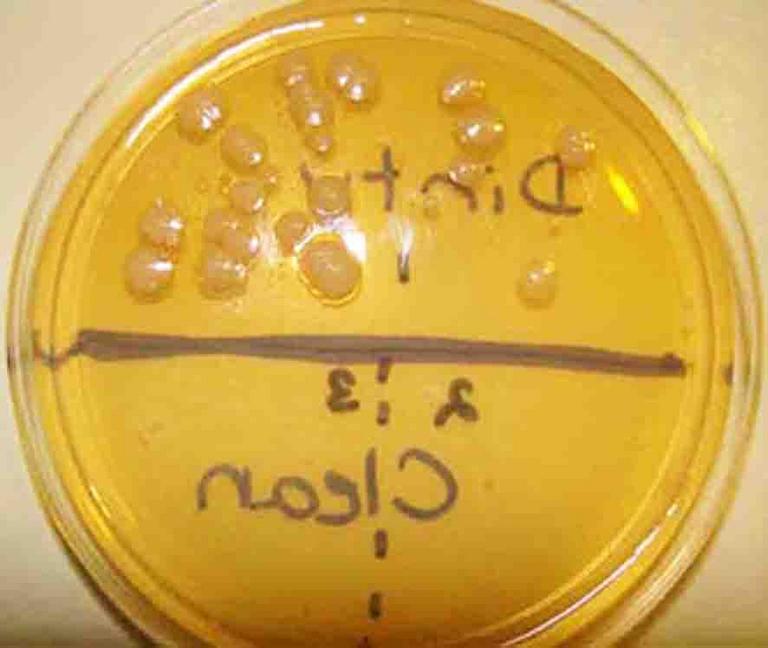 | ||||
Microbial Growth
Practice Test Questions I
Virtual Microbiology Classroom of Science Prof Online
Microbial Growth Sample Test Questions - Part 1
SPO VIRTUAL CLASSROOMS
 | ||||||
1. Which of the following could be found growing on the surface of TSY agar in a Petri dish?
a. obligate anaerobes
b. a facultative anaerobes
c. viruses on the surface of the agar
d. barophiles
e. hyperthermophiles
2. Microorganisms that can be found thriving in icy-cold climates would be considered...
a. barophiles
b. thermophiles
c. mesophiles
d. psychrophiles
e. bibliophile
3. If you carried out an experiment growing different types of microorganisms in liquid culture, which type of organism would you find congregated just a little below the liquid's surface?
a. obligate aerobes
b. obligate anaerobes
c. microaerophiles
d. aerotolerant bacteria
e. psychrophiles
4. Which microbe would you most likely find in large numbers in an extremely hypertonic salty environment?
a. Mycobacterium
b. Bacillus
c. Staphylococcus
d. E. coli
e. Salmonella
5. If I start with one bacterium (generation 0), how many bacteria would I have by generation 4 produced by binary fission?
a. 2 b. 4 c. 8 d. 16 e. 32
6. Which phase in a population growth curve is associated with no increase or decrease in population?
a. lag phase
b. logarithmic phase
c. stationary phase
d. stop phase
e. death phase
The following questions, from the Virtual Microbiology Classrooms (8-week & 16-week), are designed to help students better understand this topic. All questions are based on material that can be found on the Microbial Growth Main Page.
 | ||||||
HOME MICROBIOLOGY EXPERIMENT FROM SPO
TSY agar with sample from dirty dishes on top (note bacterial colonies that grew), and sample from cleaned dishes on bottom.
Microbial growth curve. Log phase, followed by exponential phase, stationary phase and death phase.
Free review questions to help students better understand this topic.
Virtual Microbiology Classroom provides a wide range of free educational resources including PowerPoint Lectures, Study Guides, Review Questions and Practice Test Questions.
Page last updated: 2/2016
Time lapse video of
E. coli bacteria growing, viewed through microscope.
SCIENCE VIDEOS
7. Which term best describes an organism that can't exist in the presence of oxygen?
a. obligate aerobe
b. facultative aerobe
c. obligate anaerobe
d. facultative anaerobe
e. microaerophlile
8. Why are high temperatures, outside of the range that an organism is adapted to, potentially deadly?
a. high temperatures lead to too rapid growth
b. high temperatures slow reproduction
c. high temperatures change the shape of proteins
d. high temperatures make lipid membranes brittle and fragile
9. What microbe can thrive and grow in the acidic environment of the human stomach?
a. Staphylococcus aureus
b. E. coli
c. Helicobacter pylori
d. Vibrio cholerae
e. Streptococcus pyogenes
10. The time required for a cell to undergo binary fission is called the:
a. exponential growth rate
b. growth curve
c. generation time
d. lag period
e. stationary phase
Click here for more Microbial Growth Practice Test Questions.







